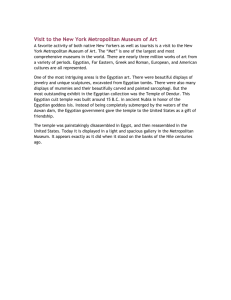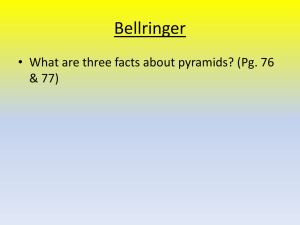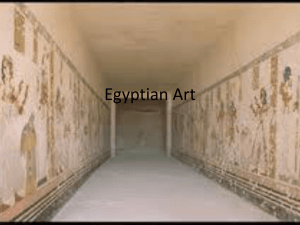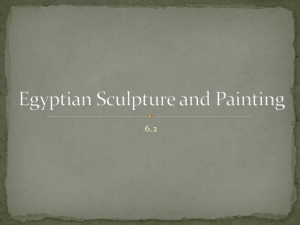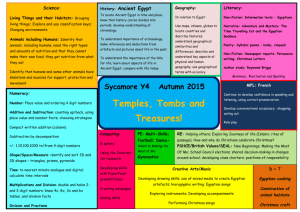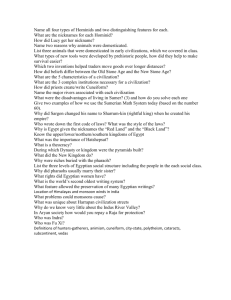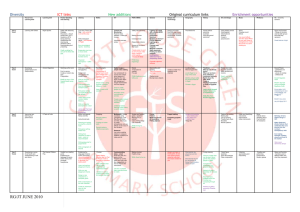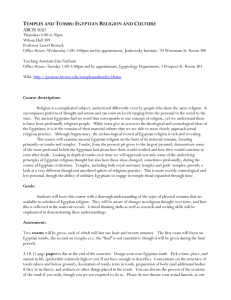Unit Objectives
advertisement
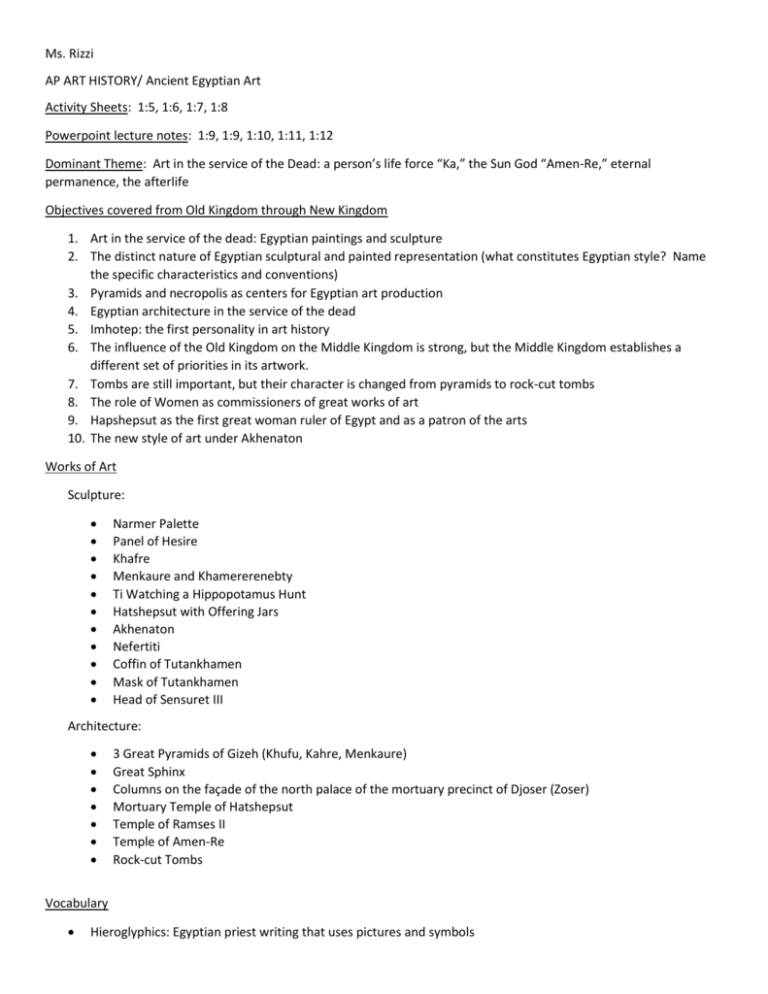
Ms. Rizzi AP ART HISTORY/ Ancient Egyptian Art Activity Sheets: 1:5, 1:6, 1:7, 1:8 Powerpoint lecture notes: 1:9, 1:9, 1:10, 1:11, 1:12 Dominant Theme: Art in the service of the Dead: a person’s life force “Ka,” the Sun God “Amen-Re,” eternal permanence, the afterlife Objectives covered from Old Kingdom through New Kingdom 1. Art in the service of the dead: Egyptian paintings and sculpture 2. The distinct nature of Egyptian sculptural and painted representation (what constitutes Egyptian style? Name the specific characteristics and conventions) 3. Pyramids and necropolis as centers for Egyptian art production 4. Egyptian architecture in the service of the dead 5. Imhotep: the first personality in art history 6. The influence of the Old Kingdom on the Middle Kingdom is strong, but the Middle Kingdom establishes a different set of priorities in its artwork. 7. Tombs are still important, but their character is changed from pyramids to rock-cut tombs 8. The role of Women as commissioners of great works of art 9. Hapshepsut as the first great woman ruler of Egypt and as a patron of the arts 10. The new style of art under Akhenaton Works of Art Sculpture: Narmer Palette Panel of Hesire Khafre Menkaure and Khamererenebty Ti Watching a Hippopotamus Hunt Hatshepsut with Offering Jars Akhenaton Nefertiti Coffin of Tutankhamen Mask of Tutankhamen Head of Sensuret III Architecture: 3 Great Pyramids of Gizeh (Khufu, Kahre, Menkaure) Great Sphinx Columns on the façade of the north palace of the mortuary precinct of Djoser (Zoser) Mortuary Temple of Hatshepsut Temple of Ramses II Temple of Amen-Re Rock-cut Tombs Vocabulary Hieroglyphics: Egyptian priest writing that uses pictures and symbols Pharaoh: King of ancient Egypt Engaged Column: a column that emerges from a wall, but is still attached to it Mastaba: an early Egyptian tomb with a flat rectangular shape Necropolis: a large burial complex Sarcophagus: a coffin, usually made of stone Reserve Column: a column from the rock, and having no support function In situ: its original place, in its original position Hypostyle: an Egyptian hall having a roof supported by closely spaced colums Pylon: A monumental entrance to an Egyptian temple List all conventions: Frontal or profile view (Sculpture no to viewed in the round) Composite views Conceptual art List Symbols used in Egyptian Art (Think of the sons/daughters of Amen-Re, scarabs, cobra, cloth headdress, etc…) List all innovations:


